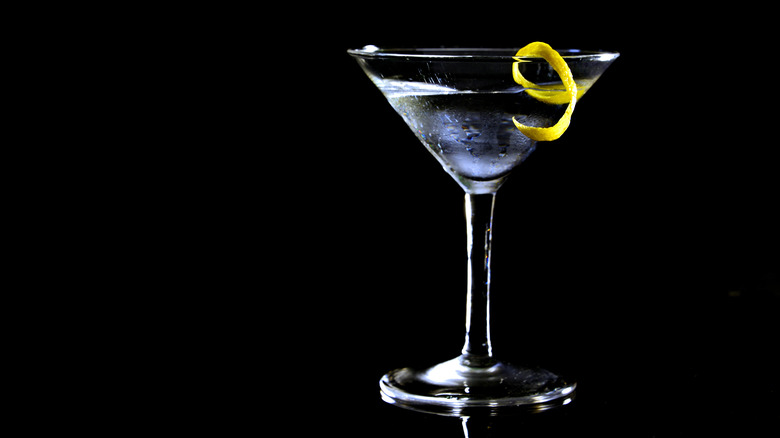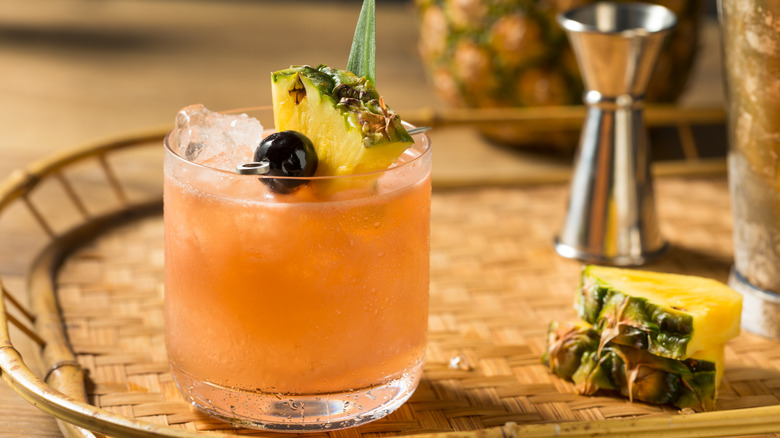How WWII Inspired The Short-Lived Kangaroo Kicker Cocktail
A Kangaroo Kicker might not ring a bell for the modern day drinker. But take a look at its ingredients: vodka, dry vermouth, and orange bitters. Sound familiar?
In the years leading up to World War II, drinks like the Kangaroo Kicker became a popular menu item in bars across the U.S. The beauty is in its simplicity. Floral dry vermouth and herbal bitters showcase the vodka (use one of the best American vodkas, if you're feeling indulgent), balancing the potency and letting the subtle botanicals shine through.
The cocktail got its name thanks to Oscar Haimo, the head bartender at the Pierre in New York City during the '40s. He featured the recipe in his book, "Cocktail Digest," naming it in honor of the Australian soldiers who fought alongside Allied forces in World War II. Alternatively, Haimo might have taken inspiration from the Australian-born athlete Pat O'Dea, a collegiate football player who earned the nickname "The Kangaroo Kicker" for his record-breaking punts in the late 19th century. Haimo wasn't alone in calling it the Kangaroo Kicker, though. The cocktail appeared in other contemporary recipe books of the time, like "Stork Club Bar Book" by Lucius Beebe, published in 1946. But, unfortunately, the name never stuck. In keeping with the simplicity of its ingredients, the cocktail went down in history with a more straightforward name: the vodka martini.
Other classic cocktails from World War II
Not surprisingly, a fair share of cocktail recipes sprung up in the wake of the world's darkest hour. Take the Torpedo Juice cocktail; not for the faint-hearted, this boozy beverage contains pineapple juice and 180-proof alcohol, reminiscent of the fuel that torpedomen used to power submarines and destroyers. Rumor has it that soldiers would actually take the edge off by sneaking sips of the high-proof torpedo fuel. Brutal!
During the war, the Suffering Bastard provided the ultimate hangover cure for British officers and press corps who frequented the Shepheard's Hotel in Cairo. In 1942, the hotel's barkeep, Joe Scialom, invented this hair of the dog recipe, combining bourbon and gin with lime juice, Angostura Bitters, and ginger beer.
Near the end of the war, tiki cocktails soared in popularity when Allied soldiers (and barkeeps) brought Polynesian influences back home. Tiki bars appeared all over the U.S., serving favorites like the Mai Tai, made with dark and white rum, orange curaçao, lime juice, and almond-flavored orgeat.


